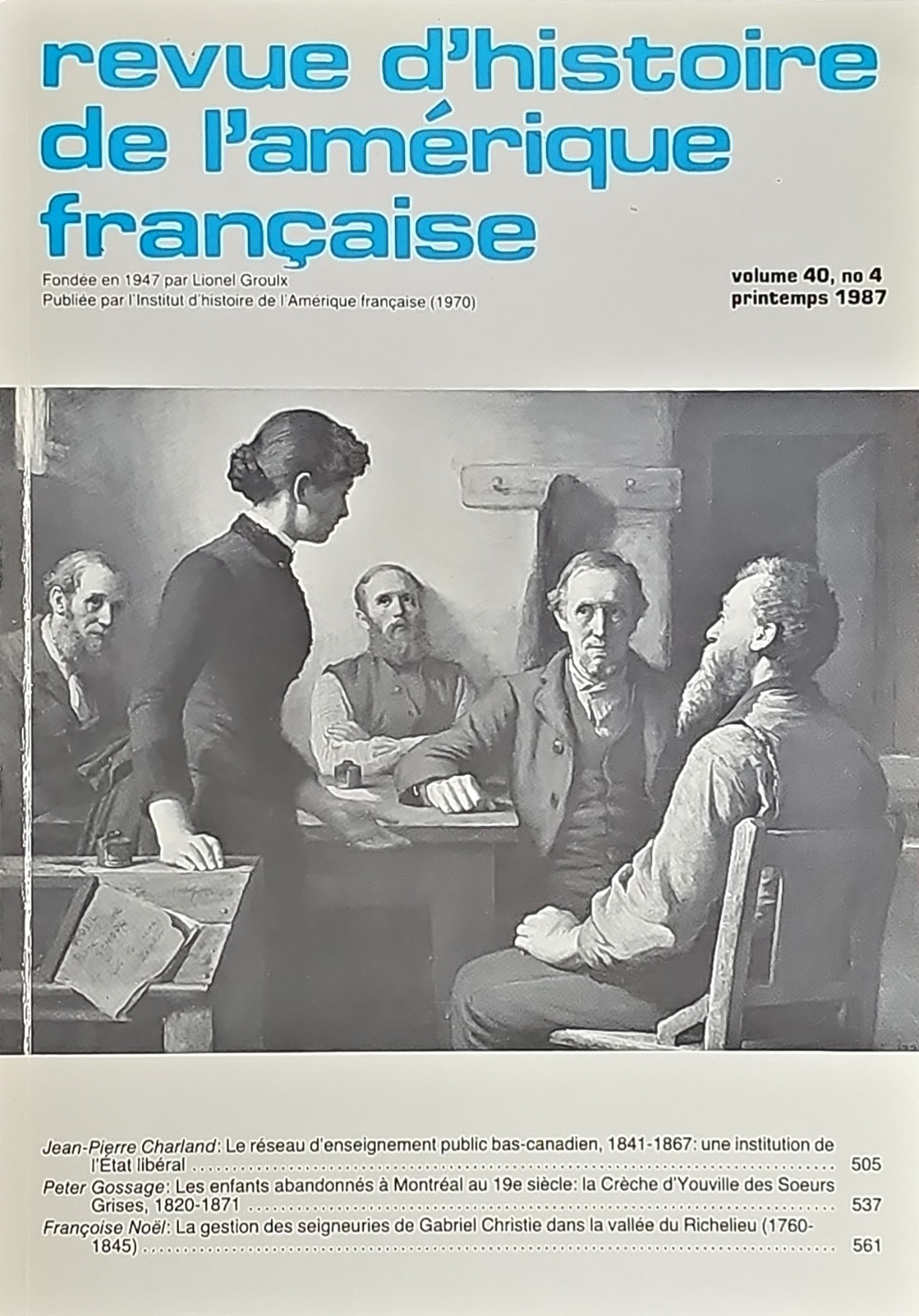Résumés
RÉSUMÉ
Les quelques années qui suivent l'union des Canadas connaissent en quelque sorte le dernier effort des colonies nord-américaines pour l'obtention du gouvernement responsable. Quoique l'on ait surtout écrit sur les incidences nationales de cette nouvelle constitution, celle-ci témoigne aussi du triomphe d'un certain nombre d'idées libérales. Les artisans du système scolaire du Canada-Est vont faire du réseau d'enseignement une institution ayant pour but de faire partager l'idéologie des réformistes au plus grand nombre. Aussi pouvons-nous trouver, dans les écrits des surintendants et des inspecteurs d'écoles, des actes de foi libéraux sans cesse réitérés ; de même, au niveau des structures éducatives, nous retrouvons des institutions qui, tout en laissant une certaine autonomie aux populations locales (grâce aux commissions scolaires), permettent une centralisation lente des pouvoirs. Ce centralisme peut paraître contredire l'esprit et la lettre de l'idéologie libérale, mais il nous semble plutôt que, face aux contestations dont le réseau mis en place était l'objet (la guerre des « éteignoirs », bien sûr, mais aussi la gourmandise croissante du clergé face à ce réseau), les autorités, surintendant et inspecteurs en tête, mais aussi le Conseil de l'Instruction publique, pragmatiques, se donnaient ainsi les pouvoirs requis pour infléchir les contenus d'enseignement et assurer que tout le réseau continuât d'épouser les idéaux libéraux. Ce n'est qu'après 1867 que le clergé allait investir le réseau scolaire par les brèches qu'il avait pu s'y ménager…
ABSTRACT
The years which followed the Union of the Canadas witnessed the final efforts of the British North American colonies to secure responsible government. While the national impact of the new constitutional arrangements has been extensively described, they were also the product of liberal ideas. The architects of the Canada East school system made it into an institution designed to promote reformist ideology. Thus we find, in the writings of school inspectors and superintendants of education, numerous professions of faith in liberalism; as well, the education system itself, while leaving a degree of autonomy to the local population through the school boards, was geared towards a steady centralization of power. While centralization may appear in contradiction with the spirit and the letter of liberalism, educational authorities (the Superintendant, the inspectors, and the Conseil de l'instruction publique), faced with the challenges to the system from the "candle snuffers" and threatened by the clergy's unrelenting attempts at control, gave themselves enough power to shape educational contents and to ensure that the school system continue to promote liberal ideas. It is only after 1867 that the clergy was able to take over the school system through the doors it had managed to open in the previous period.
Veuillez télécharger l’article en PDF pour le lire.
Télécharger

